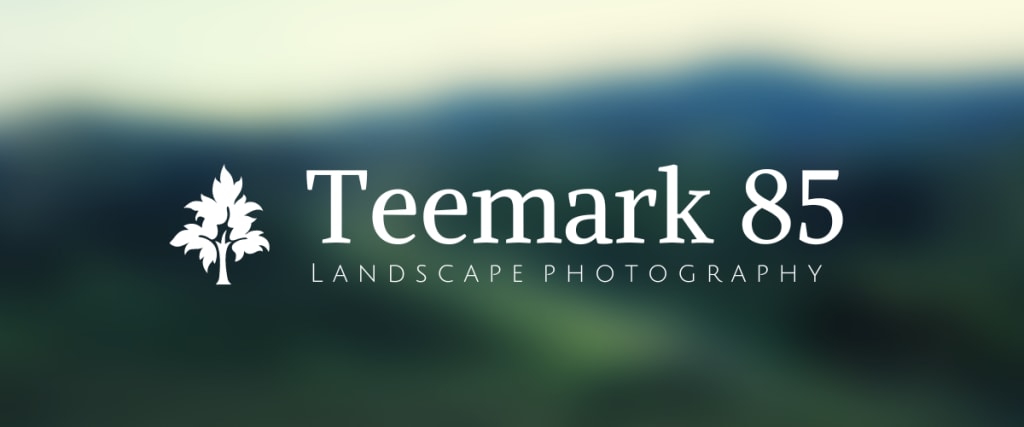Capturing Moments: The Art and Science of Photography
Mastering Techniques, Exploring Styles, and Understanding the Gear Behind Stunning Photos

Photography, the art of capturing light and turning moments into lasting memories, has evolved dramatically since its inception. From the earliest daguerreotypes to the high-resolution digital images we see today, photography has been a cornerstone of human expression, allowing us to document our lives, tell stories, and create art.
In this blog, we will explore the intricate dance between art and science in photography. We will delve into various techniques, styles, and the gear that makes it all possible. Whether you're a budding photographer or a seasoned professional, there's always something new to learn and discover in this ever-evolving field.
The get the best photography check this secret
The Fundamentals of Photography
Understanding Light
Light is the essence of photography. The word itself, derived from the Greek words "photos" (light) and "graphos" (drawing), means "drawing with light." Understanding how light works, how it interacts with subjects, and how to manipulate it, is crucial for any photographer.
Natural vs. Artificial Light: Natural light, provided by the sun, offers a dynamic range and quality that is difficult to replicate. However, artificial light sources, like studio lights and flashes, provide control and consistency, making them invaluable in certain scenarios.
Golden Hour: The period shortly after sunrise and before sunset, known as the golden hour, provides a soft, warm light that is highly sought after by photographers
Blue Hour: The time just before sunrise and after sunset, when the sky is still blue but the sun is below the horizon, creates a unique lighting scenario perfect for moody and dramatic shots.
The get the best photography check this secret
Composition Techniques
Composition is the arrangement of elements within a photograph. Mastering composition techniques can turn an average photo into a masterpiece.
Rule of Thirds: Dividing your frame into nine equal segments (three rows and three columns) and placing the subject along these lines or at their intersections creates balance and interest.
Leading Lines: Lines that guide the viewer's eye towards the subject can create depth and direct focus within an image.
Framing: Using elements within the scene to frame the subject can add context and a sense of depth.
Symmetry and Patterns: Symmetrical compositions and repetitive patterns can create visually pleasing and harmonious images.
Depth of Field: Controlling the depth of field, the area of the image that is in focus, can help isolate the subject from the background or keep everything sharp and detailed.
Exposure Triangle
The exposure triangle comprises three fundamental elements: aperture, shutter speed, and ISO. Understanding how these components interact is key to achieving the correct exposure.
Aperture: The size of the lens opening, measured in f-stops, controls the amount of light entering the camera and affects the depth of field.
Shutter Speed: The duration the camera's sensor is exposed to light. Faster shutter speeds freeze motion, while slower speeds can create motion blur.
ISO: The sensor's sensitivity to light. Lower ISO values produce less noise but require more light, while higher values are better for low-light situations but can introduce grain.
The get the best photography check this secret
Exploring Different Photography Styles
Landscape Photography
Capturing the beauty of the natural world, landscape photography requires patience, an eye for detail, and an understanding of light.
Wide-Angle Lenses: Essential for capturing expansive scenes, wide-angle lenses can provide a sense of scale and grandeur.
Filters: Neutral density (ND) filters, polarizers, and graduated filters can help manage challenging lighting conditions and enhance colors and contrast.
Tripods: A stable tripod is crucial for long exposures, especially in low light or when using slow shutter speeds to capture movement like flowing water.
Portrait Photography
Portraits focus on capturing the personality and essence of a subject, often requiring a balance of technical skill and interpersonal interaction.
Prime Lenses: Lenses with fixed focal lengths, like 50mm or 85mm, are popular for their sharpness and beautiful background blur (bokeh).
Lighting: Understanding how to manipulate light, whether natural or artificial, is key to creating flattering portraits. Softboxes, reflectors, and diffusers can help achieve soft, even lighting.
Posing and Communication: Guiding your subject into natural and flattering poses while making them feel comfortable and confident is a critical skill for portrait photographers.
The get the best photography check this secret
Street Photography
Street photography captures candid moments and everyday life, often focusing on human interactions within urban environments.
Discreet Gear: Compact cameras or mirrorless systems with quiet shutters allow for unobtrusive shooting.
Anticipation and Quick Reflexes: Street photographers need to anticipate moments before they happen and react quickly to capture them.
Ethics and Respect: Being mindful of privacy and respectful of your subjects is essential in street photography.
Wildlife Photography
Photographing wildlife requires patience, knowledge of animal behavior, and often, specialized equipment.
Telephoto Lenses: Long lenses are essential for capturing distant subjects without disturbing them.
Stealth and Patience: Blending into the environment and waiting for the perfect moment are key to successful wildlife shots.
Safety and Ethics: Maintaining a safe distance and respecting wildlife are crucial for ethical wildlife photography.
Macro Photography
Macro photography reveals the intricate details of small subjects, from insects to flowers.
Macro Lenses: These lenses offer high magnification and the ability to focus closely on small subjects.
Lighting: Ring lights or diffused flashes can help illuminate tiny subjects without harsh shadows.
Stability: A sturdy tripod or macro focusing rail can help achieve sharp, detailed images.
The Importance of Post-Processing
Post-processing is an essential part of digital photography, allowing photographers to enhance and refine their images.
Software Options
Adobe Lightroom: A powerful tool for managing and editing large numbers of photos, with robust organizational features and non-destructive editing capabilities.
Adobe Photoshop: Offers advanced editing features for more intricate adjustments and creative manipulations.
Capture One: Popular among professional photographers for its high-quality raw processing and tethering capabilities.
GIMP: A free alternative with many of the same features as Photoshop, suitable for those on a budget.
Basic Editing Techniques
Cropping and Straightening: Adjusting the composition and alignment of an image can significantly improve its impact.
Exposure and Contrast: Balancing the light and dark areas of an image to create the desired mood and highlight important details.
Color Correction: Adjusting white balance, saturation, and vibrancy to ensure accurate and pleasing colors.
Sharpening and Noise Reduction: Enhancing details and reducing graininess, especially important for images taken in low light or with high ISO settings.
The get the best photography check this secret
Advanced Editing Techniques
Dodging and Burning: Selectively lightening or darkening areas of an image to guide the viewer's eye and enhance dimensionality.
Cloning and Healing: Removing unwanted elements or imperfections from an image while maintaining a natural look.
Layer Masks and Blending Modes: Combining multiple adjustments and effects with precision and control.
Choosing the Right Gear
Selecting the right equipment can be overwhelming, but understanding your needs and the available options can help you make informed decisions.
Cameras
DSLRs: Digital single-lens reflex cameras offer versatility, durability, and a wide range of lenses. They are suitable for various types of photography but can be bulky.
Mirrorless Cameras: Lighter and often more compact than DSLRs, mirrorless cameras provide excellent image quality and growing lens options.
Compact Cameras: Ideal for casual photographers or as a secondary camera, compact cameras are portable and easy to use.
Smartphone Cameras: Modern smartphones offer impressive image quality and convenience, making them a viable option for everyday photography.
Lenses
Prime Lenses: Fixed focal length lenses are known for their sharpness and wide apertures, making them great for low light and achieving shallow depth of field.
Zoom Lenses: Offering flexibility with variable focal lengths, zoom lenses are versatile and convenient for a range of situations.
Specialty Lenses: Macro lenses for close-up photography, fisheye lenses for ultra-wide perspectives, and tilt-shift lenses for architectural shots are examples of lenses designed for specific purposes.
The get the best photography check this secret
Accessories
Tripods: Essential for stable shots, especially in low light or for long exposures.
Filters: Polarizers, ND filters, and UV filters can enhance your images and protect your lenses.
Flash and Lighting Equipment: External flashes, softboxes, and reflectors help control lighting in various conditions.
Camera Bags: Protecting your gear and keeping it organized is crucial, especially when traveling or shooting on location.
The Journey of Continuous Learning
Photography is a journey of continuous learning and growth. Staying curious, experimenting with new techniques, and seeking inspiration from other photographers are key to evolving as an artist.
Online Resources
Tutorials and Courses: Websites like Udemy, Coursera, and CreativeLive offer courses on various aspects of photography, from basics to advanced techniques.
YouTube Channels: Channels like Peter McKinnon, Tony & Chelsea Northrup, and Mango Street provide valuable insights and tutorials.
Photography Blogs and Websites: Platforms like PetaPixel, Digital Photography School, and Fstoppers offer tips, reviews, and inspiration.
Community and Feedback
Photography Groups and Clubs: Joining local or online photography groups can provide a sense of community, opportunities for collaboration, and constructive feedback.
Social Media: Platforms like Instagram, Flickr, and 500px
About the Creator
Enjoyed the story? Support the Creator.
Subscribe for free to receive all their stories in your feed. You could also pledge your support or give them a one-off tip, letting them know you appreciate their work.





Comments
There are no comments for this story
Be the first to respond and start the conversation.